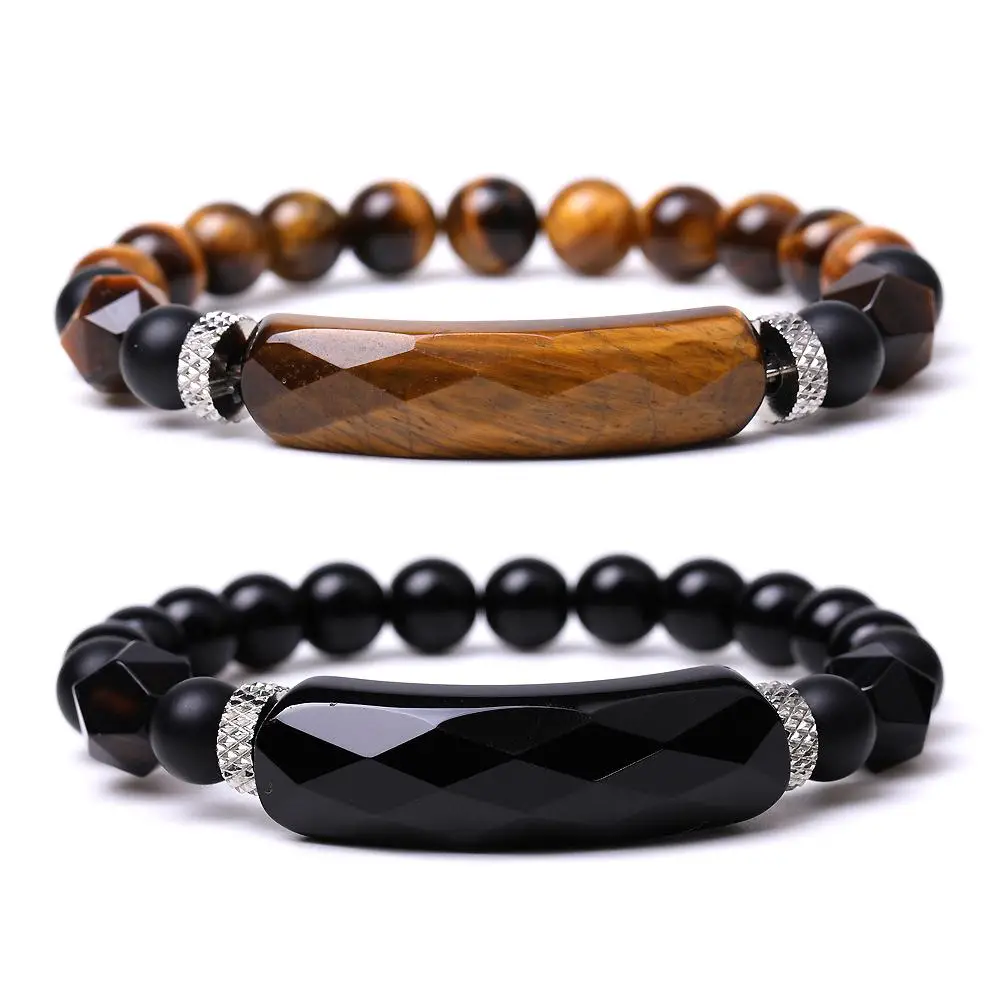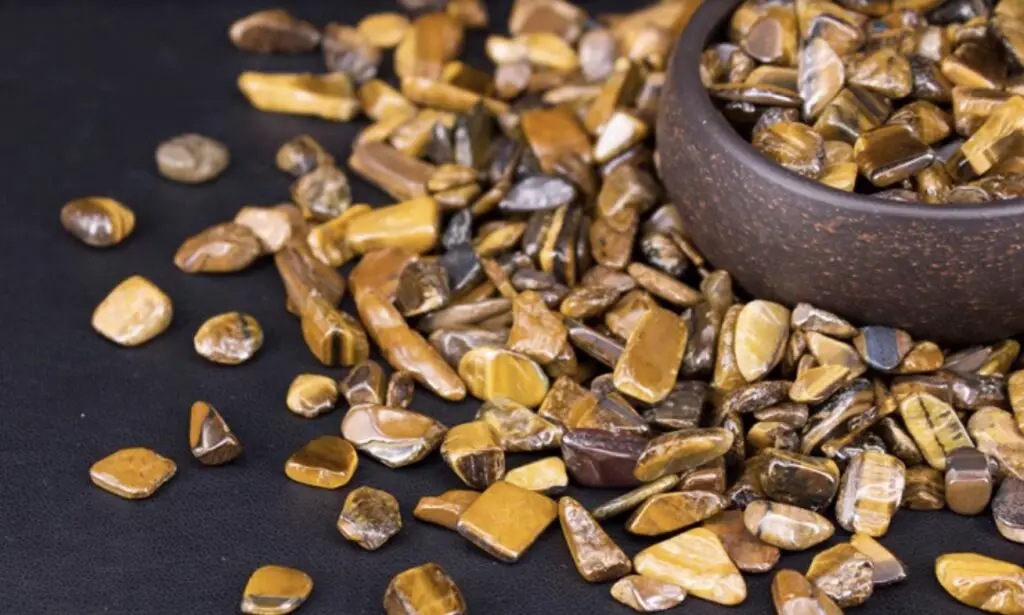Have you ever wondered if tiger’s eye stones can withstand sunlight? Does the color of tiger’s eye stones fade when worn in the sun?
The answer is NO. Usually, Normal wear in sunlight does not cause tiger’s eye stones to change color. However, you do need to be careful about how long you wear it and how you care for it.
As a lady who is super into tiger’s eye stones, I have been wearing tiger’s eye stones for 10 years, and the first time I saw one, I was mesmerized by her appearance.
I have a total of over 8 different tiger’s eye stones and tiger’s eye jewelry, and they haven’t faded very badly, even though I wear them a lot.
Today I will explain to you in detail why tiger’s eye stones resist sunlight and why your tiger’s eye stone fades when exposed to the sun.
Let’s get started!
The Effects of Sunlight on Tiger’s Eye
Sunlight is essentially broad-spectrum electromagnetic radiation from the sun. Over time, the ultraviolet rays and heat from sunlight may damage or discolor certain gemstones.
Natural tiger’s eye stones have good stability and usually do not fade noticeably, even after prolonged exposure to sunlight.
There may be several reasons why tiger’s eye is resistant to fading in the sun:
Oxidized state of iron – The iron in tiger’s eye is fully oxidized, so UV radiation cannot further alter its oxidized state. This is in contrast to many blue/purple stones where the iron is not fully oxidized.
Stable Color Center – The limonite and hematite that contribute to the color of tiger’s eye stone are in finely dispersed particles in the quartz. This makes the color center very stable.
Inert host material – Quartz is an inert and stable material, so the structure of tiger’s eye does not change even after prolonged exposure to light.
However, there are some caveats to consider:
- Lower quality tiger’s eye or gemstones with high levels of impurities may fade after prolonged periods of excessive sunlight.
- The heat of the sun may cause micro-cracks in any gemstone. Therefore, prolonged exposure to heat may theoretically damage the gemstone.
- Immediately after sun exposure, the color may change slightly due to dehydration, but it will return after some time.

Guidelines for Sun Exposure
While quality tiger’s eye stones are generally considered stable in sunlight, it is best to limit excessive sunlight exposure as a precautionary measure. Following some common sense will help protect your tiger’s eye jewelry:
- Avoid exposing your tiger’s eye jewelry to direct sunlight for long periods of time, such as several days or weeks in a row. Intermittent, short-term exposure to sunlight is fine.
- Remove your tiger’s eye rings, bracelets and necklaces when spending extended periods of time in the hot sun, such as gardening, boating, sports, etc. The combination of sunlight and heat may damage any gemstone.
- Keep tiger’s eye jewelry out of direct sunlight when not being worn. Keeping your jewelry in a jewelry box, pouch or drawer will keep it out of unwanted sunlight.
- Clean your tiger’s eye stone regularly to prevent grease, sweat and dirt from building up on the surface. Over time, chemicals and debris may exacerbate discoloration. Use a mild detergent and water and a soft brush.
- Avoid exposing your tiger’s eye stone to bleach, acids or other harsh chemicals that could tarnish the stone. Care should also be taken when using household cleaners, cosmetics, perfumes, etc.
- Have your tiger’s eye jewelry professionally cleaned on a regular basis to remove residue. Ultrasonic and steam cleaners should be safe for tiger’s eye jewelry.
How Long Should Tiger’s Eye Be in the Sun?
Sunshine is the perfect backdrop for showcasing the beauty of Tiger’s Eye, but moderation is the golden rule here. Extended exposure to sunlight might affect the gemstone’s color over time.
To keep your Tiger’s Eye looking its best, consider limiting direct sun exposure to a few hours at a time.
Just as we need breaks in the shade to recharge, so does this gem. Balancing its time in the sun with moments of rest in a cool, shaded environment helps it maintain its lustrous charm.
Signs of Sun Damage
Natural discoloration of tiger’s eye stones due to normal wear and sun exposure occurs gradually over the years. However, some of the following signs may indicate excessive sun exposure:
- The golden brown color lightens or disappears significantly, especially in the parts of the stone most exposed to sunlight.
- Streaks and stray colors are becoming less noticeable.
- Dull, faded spots on the surface.
- Sunburn” white spots
- Small cracks, pits or voids are visible under magnification.
- Powdery or chalky texture.
Occasional, reasonable exposure to sunlight is unlikely to cause significant changes in color and clarity. However, if tiger’s eye stones are regularly exposed to intense heat and UV radiation, damage can accumulate over time.

Protecting Tiger’s Eye from Sun Damage
If you are concerned about sun sensitivity, there are options that offer additional protection:
- Apply polish – Polish creates a protective barrier against chemical and environmental damage. However, it will need to be re-polished frequently.
- Store safely – Keep unused tiger’s eye jewelry in an airtight box away from sunlight. Silicone packets will prevent hydration problems.
- Limit light – Avoid placing tiger’s eye stones near windows or in brightly lit display cases. Rotate the display so that each piece of tiger’s eye is protected from light.
- Wear it sparingly – sun damage accumulates over time. If fading is a concern, tiger’s eye stones should only be worn occasionally.
- Recoating – Jewelers can reapply a thin vapor coating to help block UV rays and increase scratch resistance. This may need to be redone every few years.
Will Heat Damage Tiger’s Eye?
In addition to sunlight, heat is another environmental factor that can affect gemstones. In the case of tiger’s eye stones, excessive heat does not usually cause damage or color changes.
Tiger’s Eye is not resistant to high temperatures. As a type of quartz, it remains stable even at temperatures as high as 750-850°C. Quarried tiger’s eye is naturally exposed to higher than normal ground temperatures during its formation.
However, thermal shock caused by a sudden change in temperature can shatter tiger’s eye and any other gemstone. For example, placing a hot gemstone directly into cold water. Avoid exposing heated tiger’s eye stones to sudden temperature changes.
As with other gemstones, minor cracks caused by heat stress that lasts for years may affect the durability of the stone. Generally, however, tiger’s eye stones can withstand typical wear, storage and display conditions without problems.
What’s Next?
Tiger’s Eye is one of the most durable and light resistant gold gemstones available. Tiger’s Eye has excellent stability and shows minimal color change after decades of normal wear.
Nonetheless, in order to maintain the condition and appearance of your gemstone, it is important to wear, store, and clean your gemstone carefully to limit its prolonged exposure to sunlight.
Following basic precautions will help ensure that your beautiful tiger’s eye jewelry maintains its warm golden glow for years to come.
If you wanna learn more about tiger’s eye, you can read this post Who Should Or Should Not Wear Tiger’s Eye?
About the Author
I was introduced to the power of crystals by chance during a trip overseas ten years ago, and began to learn about crystals and meditation. After years of experiencing firsthand the beauty and benefits of crystals, I founded CrystalWith to share my knowledge with others.




